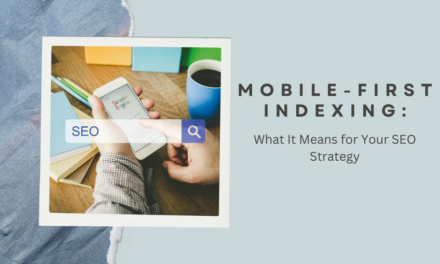SEO is often described as a mix of science and creativity. While technical optimisation, content creation and outreach all play a part, one tactic that still delivers results is broken link building. At its heart it’s about finding broken links on a site, contacting the site owner and suggesting your own content as a replacement. What seems like a digital tidy up task becomes a way to fix backlinks, boost authority and unlock hidden SEO opportunities.
Many marketers overlook broken link building because it seems tedious compared to content creation or link outreach campaigns. But the beauty of this tactic is it’s a win win. Site owners benefit by fixing dead links that harm user experience and you get valuable backlinks that increase your visibility in the search rankings. In a world where link building tactics are often scrutinised for being manipulative, broken link building stands out as ethical, practical and sustainable. It turns what was once a dead end into a growth opportunity, and proves the value of persistence and problem solving in SEO.
Why Broken Links Are a Problem for Websites
Broken links are more than just a minor annoyance. They show poor site maintenance and disrupt the user journey, leaving visitors frustrated when they click on a link and land on a 404 page. This hurts the user experience which search engines take into account when ranking sites. A site with broken links looks unprofessional and risks losing traffic and credibility. Visitors will bounce off quickly assuming the whole site is unreliable.
From a technical perspective, broken links waste crawl budget, meaning search engine bots spend time indexing dead ends instead of fresh or valuable content. This hurts the site’s SEO. For site owners, fixing these links is important but many don’t have the time or resources to keep on top of them. That’s where broken link building comes in as a win win. By identifying the issues and offering a fix you help the site owner fix their site and create new SEO opportunities for your own content.
How Broken Link Building Works
Broken link building starts with research. Tools like Ahrefs, SEMrush or Screaming Frog can help you find broken external links on authority sites in your niche. Once you’ve found them, the next step is to create or repurpose content that fits as a replacement. For example if you find a dead link pointing to a guide about “small business accounting” you can present your own updated resource on the same topic.
Outreach is the meat of this process. You need to approach site owners with a helpful, polite message pointing out the broken link and offering your content as a replacement. The key here is to show value: you’re helping them fix backlinks that harm their user experience and offering relevant high quality content. This genuine approach builds goodwill and increases the chances of getting a backlink. Unlike cold link requests, broken link building frames you as a problem solver not just someone asking for favors.
The SEO Benefits of Fixing Backlinks
One of the biggest benefits of broken link building is the ability to fix links in a way that strengthens your domain authority. Backlinks are still one of the top ranking factors for search engines and getting them from established sites builds your credibility. Unlike shady tactics this method puts links in natural, contextually relevant places which is exactly what search engines reward.
Fixing links also creates compounding benefits. As your content starts to get links from fixed placements, its visibility in search increases making it easier for others to find and link to your work. This creates a ripple effect where one broken link opportunity can lead to multiple new SEO opportunities. Plus the site owner also benefits from having a cleaner and more reliable website, this is a win win for everyone involved. It’s rare in SEO to find a strategy that benefits everyone but broken link building does.
Tools for Identifying Broken Links
Efficiency in broken link building comes from leveraging the right tools. Website audit software like Screaming Frog or Sitebulb can crawl a site and highlight external links that lead to 404 pages. Platforms like Ahrefs and SEMrush also offer broken link reports, allowing you to quickly filter for opportunities within your niche. Google Search Console can be another useful tool, as it often reveals broken links within your own site that need attention.
These tools simplify what would otherwise be an overwhelming task of manually checking every link. They also provide insights into the authority of the linking site, allowing you to prioritize high-value opportunities. By combining automation with human judgment, you can focus on broken link opportunities that not only fix backlinks but also deliver long-term SEO opportunities. Having the right data at your fingertips transforms broken link building from a chore into a streamlined, strategic process.
Crafting the Perfect Outreach Message
Outreach is often the make-or-break stage of broken link building. Site owners receive countless link requests daily, many of which are irrelevant or self-serving. To stand out, your message must focus on value and clarity. Begin by politely pointing out the broken link, providing its exact location on the page. Then, suggest your content as a replacement, highlighting why it is relevant and helpful to their audience.
Personalization is critical. Referencing the site owner by name and demonstrating genuine interest in their work increases your chances of a positive response. Avoid pushy or generic language; instead, present yourself as someone who noticed an issue and is offering a solution. The more professional and considerate your approach, the higher your success rate. Crafting effective outreach messages is part art, part science, but mastering it ensures that your broken link building efforts translate into real SEO opportunities.
Broken Link Building as Relationship Building
Beyond immediate SEO gains, broken link building also fosters long-term relationships. Each outreach email is a chance to connect with influencers, bloggers, and site owners in your industry. By helping them fix backlinks and improve their site, you position yourself as a resource rather than just a marketer. Over time, this can lead to guest posting opportunities, collaborations, and a stronger presence within your niche.
Relationship building is an often-overlooked aspect of SEO. Many businesses chase quick wins without realizing the long-term potential of genuine connections. Broken link building, because it starts from a place of offering help, creates a foundation for trust. Even if your content is not always chosen as the replacement, you have opened a line of communication that can be valuable later. By focusing on relationships, you turn broken link building into more than just a link acquisition strategy; it becomes a gateway to community building and authority.
Common Mistakes to Avoid
Like any SEO strategy, broken link building has its pitfalls. One common mistake is offering irrelevant content as a replacement. Site owners can quickly see through attempts to shoehorn unrelated links into their pages. Another error is failing to personalize outreach, which makes messages look like spam. Businesses also sometimes overlook the importance of maintaining their own site, focusing too much on external links while ignoring broken links within their content.
Patience is another crucial factor. Some marketers expect instant results, but broken link building is a long-term strategy that requires persistence. Responses may be slow, and not every opportunity will lead to a backlink. However, consistency pays off. By avoiding these mistakes and focusing on genuine, value-driven interactions, you can maximize the effectiveness of broken link building while turning common errors into meaningful SEO opportunities.
Why Broken Link Building Stands Out
Amid countless SEO strategies, broken link building stands out for its ethical and sustainable approach. It addresses real problems; dead links; while delivering measurable benefits to all parties involved. Unlike practices that manipulate rankings or rely on thin content, this method is grounded in improving the web ecosystem. Search engines reward it because it aligns with their goal of creating a better user experience.
For businesses, the appeal lies in both its practicality and its scalability. Whether you are a small blog or a large enterprise, broken link building can be tailored to fit your resources and goals. It combines technical insight with human interaction, creating a holistic approach to link acquisition. By turning broken links into SEO opportunities, businesses demonstrate resourcefulness, adaptability, and a commitment to quality. These are precisely the traits that not only boost rankings but also build lasting digital credibility.
Using Broken Link Building for Content Repurposing
One overlooked advantage of broken link building is how it creates opportunities to repurpose content. When you identify a broken link on a high-authority site, you can review the original resource it was meant to reference and create an updated, more relevant version. This does not always require starting from scratch; existing blog posts, case studies, or guides can be refreshed with current data and restructured to align with the missing content. By doing so, you provide immediate value to the site owner while also strengthening your own library of high-quality material. Repurposing ensures that older content continues to drive SEO opportunities instead of being buried, and it allows you to expand your digital footprint strategically.
Broken Link Building and Competitor Insights
Broken link building is also an effective way to gather intelligence on competitors. By analyzing broken backlinks pointing to competitor sites, you can see where they once held authority and identify opportunities to take their place. Tools like Ahrefs or SEMrush make it possible to discover which sites are linked to your competitors’ now-defunct resources. By stepping in with your own content, you not only fix backlinks for the linking site but also redirect authority away from your competition and toward your own brand. This approach highlights how broken link building is not just about maintenance but also about competitive positioning, turning lost opportunities for others into SEO wins for you.

Scaling Broken Link Outreach with Systems
While broken link building can begin as a manual process, scaling it requires systems and consistency. Creating outreach templates, segmenting opportunities by niche relevance, and scheduling follow-ups are all essential steps for efficiency. Automation tools can help you track open rates and responses, but personalization must remain a core part of the process to maintain credibility. By building a repeatable workflow, you can expand efforts without overwhelming your team. This approach allows you to consistently fix backlinks and uncover SEO opportunities at scale, rather than treating broken link building as a one-time project. When structured properly, it becomes an ongoing growth channel that complements other link-building strategies.
Measuring the ROI of Broken Link Building
Like any SEO tactic, broken link building must be evaluated in terms of return on investment. Success is not just measured by the number of backlinks secured but also by the quality and authority of the domains linking to your site. Tracking metrics such as organic traffic growth, keyword rankings, and referral traffic from newly acquired links helps demonstrate impact. Additionally, monitoring conversion rates from these visitors provides insight into whether the strategy is driving real business results.
The cost-effectiveness of broken link building is particularly compelling, as it often requires less financial investment than paid campaigns or sponsored content. By regularly measuring performance, businesses can refine their approach and ensure that broken link building continues to deliver strong SEO opportunities over the long term.
Conclusion
Broken link building is proof that even errors and oversights can be transformed into growth opportunities. By helping site owners fix backlinks, businesses improve their own visibility while contributing to a cleaner, more user-friendly web. The strategy is practical, ethical, and adaptable, making it a must-have in any SEO toolkit. From understanding challenges to mastering outreach, every step reinforces the power of persistence and problem-solving in digital marketing.
The next time you come across a broken link, do not see it as a dead end. Instead, view it as a door waiting to be opened; a chance to provide value, earn trust, and strengthen your online presence. In a world where competition is fierce and algorithms constantly evolve, broken link building is a reminder that creativity and collaboration remain at the heart of SEO opportunities.












